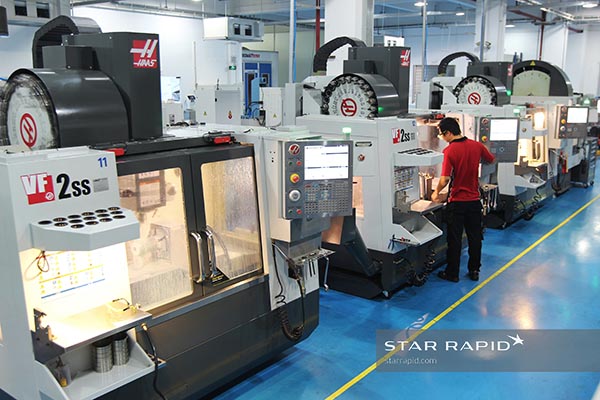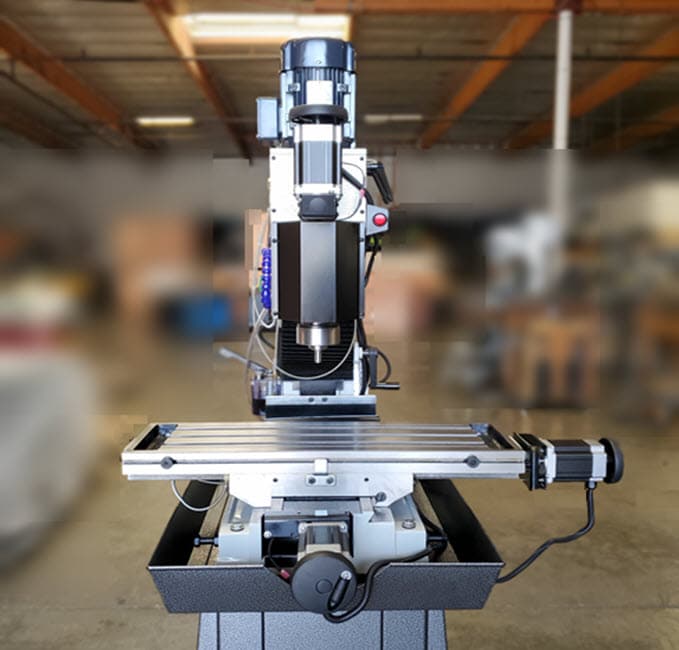Table of Contents
Paragraph 1:
Have you ever wondered how a CNC mill moves? CNC milling machines are a vital tool in modern manufacturing, and understanding how they work can help you appreciate their precision and versatility.
Paragraph 2:
In this article, we will explore the basics of how a CNC mill moves. We will discuss the different types of motion control systems used by CNC mills, and the components that make up these systems. By the end of this article, you will have a better understanding of how a CNC mill moves and the technology behind its movements.
A CNC mill moves by controlling its cutting tools along the X, Y, and Z axes. The machine follows instructions from a computer program to move the cutting tool across the workpiece in precise measurements. CNC mills use a combination of motors and lead screws to move the tool. The lead screws turn, moving the axes, while the motors provide power to the screws. The result is a precise and controlled movement that can produce complex shapes and designs.
How Does a CNC Mill Move?
The Computer Numerical Control (CNC) milling machine is a versatile and highly precise tool used in manufacturing. It is capable of producing complex shapes and designs with high accuracy and efficiency. In this article, we will explore how a CNC mill moves and works.
1. The Basics of CNC Milling
CNC milling is a subtractive manufacturing process that uses computer-controlled machines to remove material from a workpiece. These machines use a variety of cutting tools to remove material from the workpiece and create the desired shape. The CNC mill operates using a series of programmed instructions, or G-codes, that tell the machine how to move and cut the material.
The CNC mill consists of several components, including the machine bed, spindle, cutting tool, and control panel. The machine bed provides a stable platform for the workpiece and cutting tool. The spindle rotates the cutting tool, while the control panel houses the computer and software that controls the machine’s movements.
2. Linear Motion Systems
The CNC mill uses linear motion systems to move the cutting tool along the X, Y, and Z axes. These motion systems consist of linear bearings, rails, and drive systems. The linear bearings provide smooth, precise movement along the rails, while the drive systems provide the power to move the cutting tool.
There are several types of drive systems used in CNC milling machines, including ball screws, rack and pinion, and linear motors. Each system has its benefits and drawbacks, depending on the application.
3. Spindle Rotation
The spindle is the heart of the CNC milling machine. It rotates the cutting tool and determines the speed and feed rate at which the machine cuts the material. The spindle speed and feed rate are controlled by the machine’s software, which adjusts them based on the material being cut and the desired finish.
The spindle is typically driven by an electric motor and can rotate at speeds ranging from 1,000 to 30,000 revolutions per minute (RPM). The cutting tool is mounted in the spindle using a tool holder, which allows for quick and easy tool changes.
4. Tool Path Generation
The tool path is the path that the cutting tool follows as it removes material from the workpiece. The tool path is generated using CAM (Computer-Aided Manufacturing) software, which takes the 3D CAD model of the part and generates the G-code instructions that control the machine’s movements.
The CAM software takes into account the cutting tool’s size, shape, and material, as well as the material being cut and the desired finish. The software generates the tool path to minimize the number of tool changes and optimize the cutting speed and feed rate.
5. Workpiece Fixturing
The workpiece must be securely fixed to the machine bed to ensure accurate and precise cutting. This is done using a variety of fixturing methods, including clamps, vices, and fixtures. The fixturing method used depends on the size, shape, and material of the workpiece.
The workpiece must be properly aligned with the machine’s coordinate system to ensure accurate cutting. This is done using a variety of tools, including edge finders and dial indicators.
6. Cutting Tools and Tool Holders
The CNC mill uses a variety of cutting tools, including end mills, drills, and taps. These tools are made from a variety of materials, including high-speed steel, carbide, and diamond. The cutting tool is mounted in a tool holder, which is then mounted in the spindle.
The tool holder allows for quick and easy tool changes and ensures that the cutting tool is properly aligned with the workpiece. The tool holder also helps to dampen vibrations and reduce chatter during cutting.
7. Coolant Systems
The CNC mill generates a lot of heat during cutting, which can damage the cutting tool and workpiece. To prevent this, coolant is used to cool the cutting tool and workpiece during cutting. Coolant also helps to flush away chips and debris from the cutting zone.
There are several types of coolant systems used in CNC milling machines, including flood coolant, mist coolant, and air blast coolant. The type of coolant used depends on the material being cut and the desired finish.
8. Benefits of CNC Milling
CNC milling offers several benefits over traditional manual milling, including:
– Higher accuracy and precision
– Faster production times
– Greater consistency and repeatability
– Reduced labor costs
– Greater flexibility and versatility
9. CNC Milling vs. Manual Milling
Manual milling involves using a milling machine to cut and shape the material by hand. While manual milling is still used in some applications, CNC milling has several advantages over manual milling, including:
– Greater accuracy and precision
– Faster production times
– Greater consistency and repeatability
– Reduced labor costs
– Greater flexibility and versatility
10. Applications of CNC Milling
CNC milling is used in a variety of industries, including:
– Aerospace
– Automotive
– Medical
– Electronics
– Defense
– Consumer goods
CNC milling is used to produce a wide range of parts and components, including:
– Engine components
– Aircraft parts
– Medical implants
– Electronics housings
– Consumer goods components
In conclusion, CNC milling is a highly precise and efficient manufacturing process that uses computer-controlled machines to remove material from a workpiece. The CNC mill uses linear motion systems to move the cutting tool along the X, Y, and Z axes, while the spindle rotates the cutting tool at high speeds. The tool path is generated using CAM software, and the workpiece must be securely fixed to the machine bed using a variety of fixturing methods. CNC milling offers several benefits over traditional manual milling, including higher accuracy and precision, faster production times, and greater flexibility and versatility.
Frequently Asked Questions
Here are some common questions about how a CNC mill moves.
How does a CNC mill move?
A CNC mill moves in three axes- X, Y, and Z. These axes are controlled by motors that drive lead screws or ball screws. The motors are controlled by a computer program that tells them how much to move and in which direction.
The movement of the CNC mill is precise and repeatable. The accuracy of the movement depends on the quality of the machine, the accuracy of the motors, and the rigidity of the frame. The movement of the machine is essential for producing high-quality parts.
What are lead screws and ball screws?
Lead screws and ball screws are used to drive the movement of the CNC mill. A lead screw is a threaded rod that is rotated by a motor. As the rod turns, it moves a nut along its length, which drives the movement of the machine.
A ball screw is similar to a lead screw but uses ball bearings to reduce friction and increase accuracy. The ball bearings are placed between the nut and the screw, allowing for smooth movement and precise positioning. Ball screws are more expensive than lead screws but offer higher accuracy and repeatability.
What is backlash?
Backlash is the amount of play or movement in the axes of the CNC mill. It occurs when there is a slight gap between the screw and the nut, allowing for small movements in the opposite direction when the motor stops.
Backlash can lead to errors and imprecise parts. To reduce backlash, machines are designed with high-quality components, and the software compensates for any remaining backlash.
What is a stepper motor?
A stepper motor is a type of motor used to drive the movement of the CNC mill. It moves in precise, small steps, allowing for accurate positioning of the machine.
Stepper motors are used because they can be precisely controlled and provide precise movement. They are commonly used in CNC machines because they are reliable, affordable, and offer high accuracy.
What is a servo motor?
A servo motor is another type of motor used in CNC mills. Unlike stepper motors, servo motors can rotate continuously, allowing for smooth and precise movement.
Servo motors are more expensive than stepper motors but offer higher performance and accuracy. They are commonly used in high-end CNC machines for industries that require precise movements, such as aerospace and medical device manufacturing.
In conclusion, understanding how a CNC mill moves is essential for anyone interested in the manufacturing industry. By using computer numerical control, the machine can precisely move the cutting tool to create complex shapes and designs. The movement is made possible by the combination of software and hardware, which allows for pinpoint accuracy and consistency.
Furthermore, the CNC mill uses various types of motors to power the movement of the machine. The lead screw and ball screw are two popular types that convert rotary motion into linear motion. The motors are controlled by the computer, which sends signals to the drivers to move the machine in various directions.
In summary, the CNC mill is an intricate machine that relies on precise movements to create high-quality products efficiently. The combination of software, hardware, and motors allows for the machine to move with accuracy and consistency, making it an essential tool in the manufacturing industry.
Request a quote today!
[contact-form-7 id="1578" title="Contact form"]
Please compress the file into a ZIP or RAR file before uploading. Alternatively, send through your RFQ by email.
enquires@unitymanufacture.com





